 One of the faculty members in the Department of Engineering Sciences at the Middle East Technical University, Prof.Dr. Murat Dicleli, has invented a device named as "Seismic Damper" which has been converted into a commercial product, being the university's first research commercialization of an invention. Both the METU Technopolis Technology Transfer Office and Prof. Dicleli had put intensive efforts in the commercialization process of the device. For this invention, a licensing agreement has been signed with Maurer Söhne GmbH & Co. KG, which is the leading firm in the field of building materials, seismic devices and expansion joints.
One of the faculty members in the Department of Engineering Sciences at the Middle East Technical University, Prof.Dr. Murat Dicleli, has invented a device named as "Seismic Damper" which has been converted into a commercial product, being the university's first research commercialization of an invention. Both the METU Technopolis Technology Transfer Office and Prof. Dicleli had put intensive efforts in the commercialization process of the device. For this invention, a licensing agreement has been signed with Maurer Söhne GmbH & Co. KG, which is the leading firm in the field of building materials, seismic devices and expansion joints.
Detailed information about the device is given below.
MULTI-DIRECTIONAL TORSIONAL HYSTERETIC DAMPER WITH RECENTERING CAPABILITY (MRSD)
A New Anti-Seismic Device for seismic protection of buildings and bridges
MRSD is a recently developed mechanical hysteretic damper with improved performance compared to the available isolation systems. The system is composed of two main parts, the rail system at top and the base device underneath, as depicted in Fig. 1. The rail system which is essentially a guiding system will be attached to the top anchoring point, ie., the building or bridge deck, and the base device will be anchored to the bottom anchoring point, ie., the foundation or bridge pier, as illustrated in Fig. 3. Any relative movement between the two, as a result of a seismic activity, will induce displacements in the device and causes the engagement of the energy dissipaters. The energy dissipaters of MRSD are eight cylindrical steel sections, as shown if Fig. 2, each attached at top to an arm. As the device deforms, the arms rotate, as depicted in Fig. 1-a, and induce torsion, yielding and energy dissipation in the cylinders.
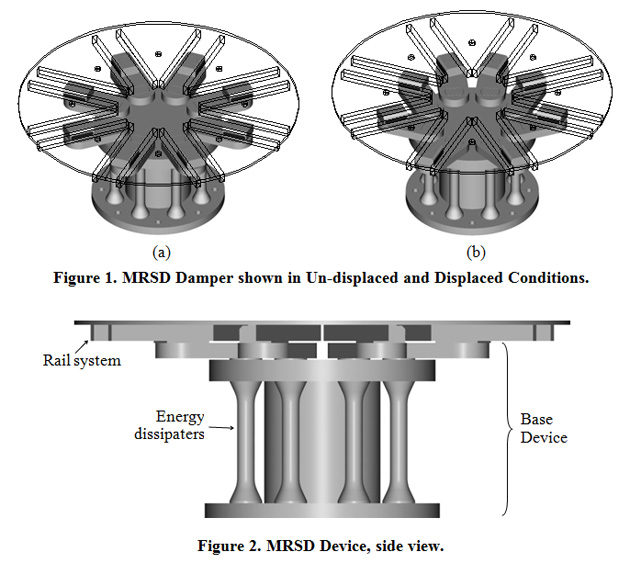
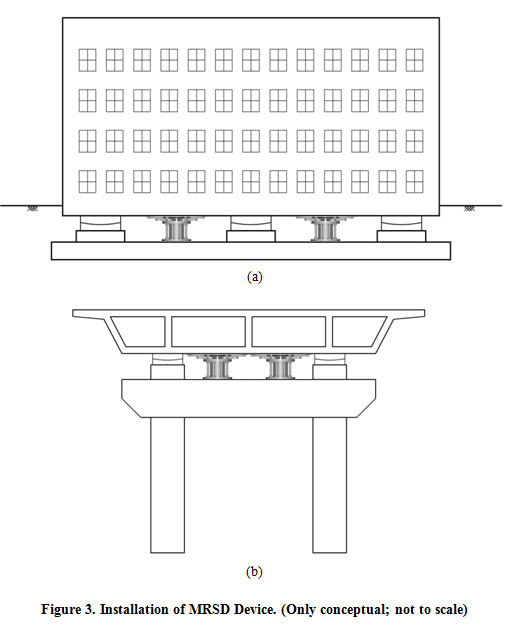
Notably, the device shows a geometric stiffening behavior in an adaptive manner (depending on displacement level), as shown in Fig. 4, which is an outcome of its special working mechanism. Geometric properties of MRSD can be easily adjusted to obtain different levels of hardening, as depicted in Fig. 4.
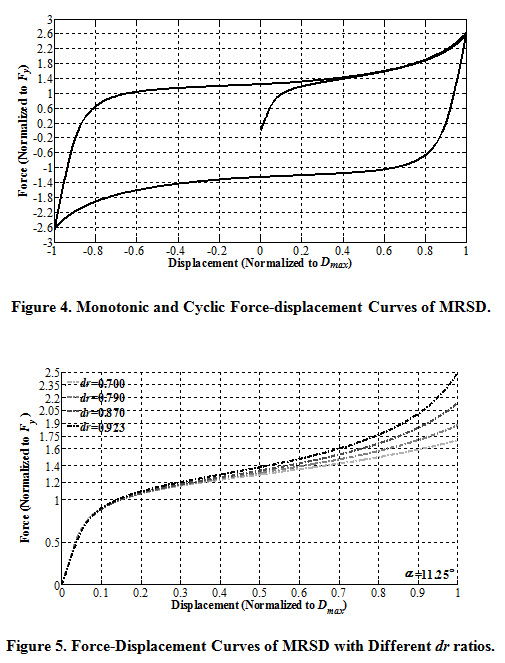
The advantages of MRSD in comparison to other available seismic isolation devices can be summarized as follows:
1- No dependence on environmental or outside physical effects (see Table 1)
2- Restoring force capability is mostly geometrical with low dependence on material hardening
3- Adaptive stiffness results in smaller displacements compared to conventional systems
4- More suitable for performance-based design, thanks to the adaptive stiffness property
5- Longer service life compared to other systems
6- Larger energy dissipation capacity due to the fatter shape of the hysteresis loops
7- Capable of large force and/or displacement capacity compared to the available multi-directional dampers
8- Not affected by vertical component of ground motion/structure response
9- Easily reusable after a damaging earthquake by replacement of internal energy dissipaters
10- More controllable characteristic strength and post-elastic stiffness
11- Adaptive stiffness of the device minimizes torsional effects in buildings as larger torsional rotation induced displacements will be resisted by a greater force
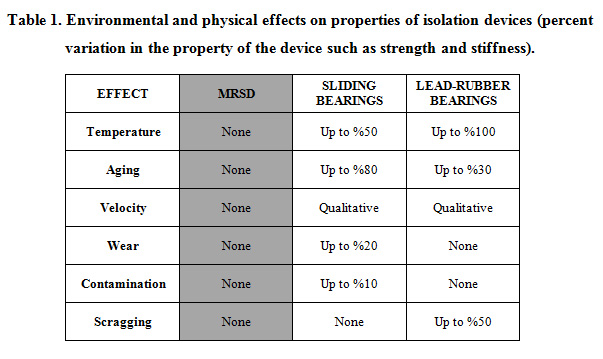
Verification tests of MRSD have been recently performed in Academy of armed forces in Munich, Germany, under the sponsorship of MAURER SÖHNE. Prototype MRSD is shown in Fig. 5 at un-displaced and displaced conditions. The plots in Fig. 6 show the cyclic response of the device.
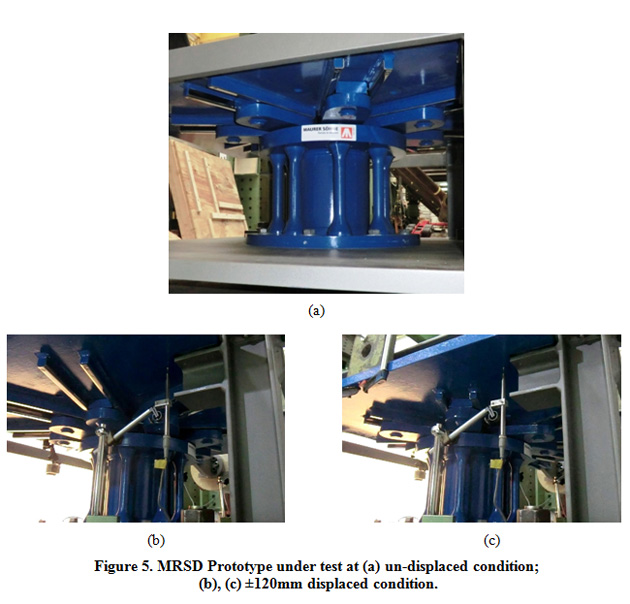
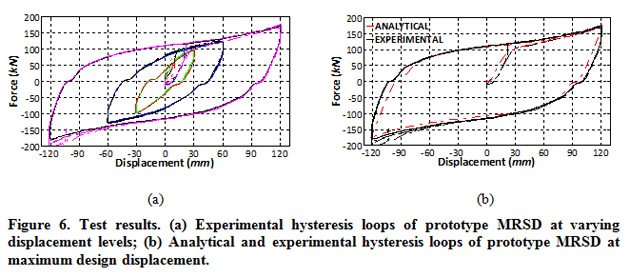
The damper could also be applied to highrise buildings. In such applications, the damper is placed within the bays of the building frame using steel braces (Figure 9). Due to the adaptive post elastic stiffnes off the damper, energy dissipation is uniformly distributed along the full height of the building.
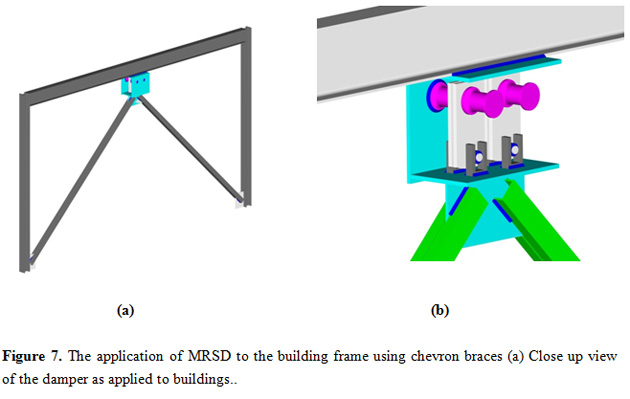
Presentation video of "Seismic Damper" by the producer company:
Product animation-1:
Product animation-2:










